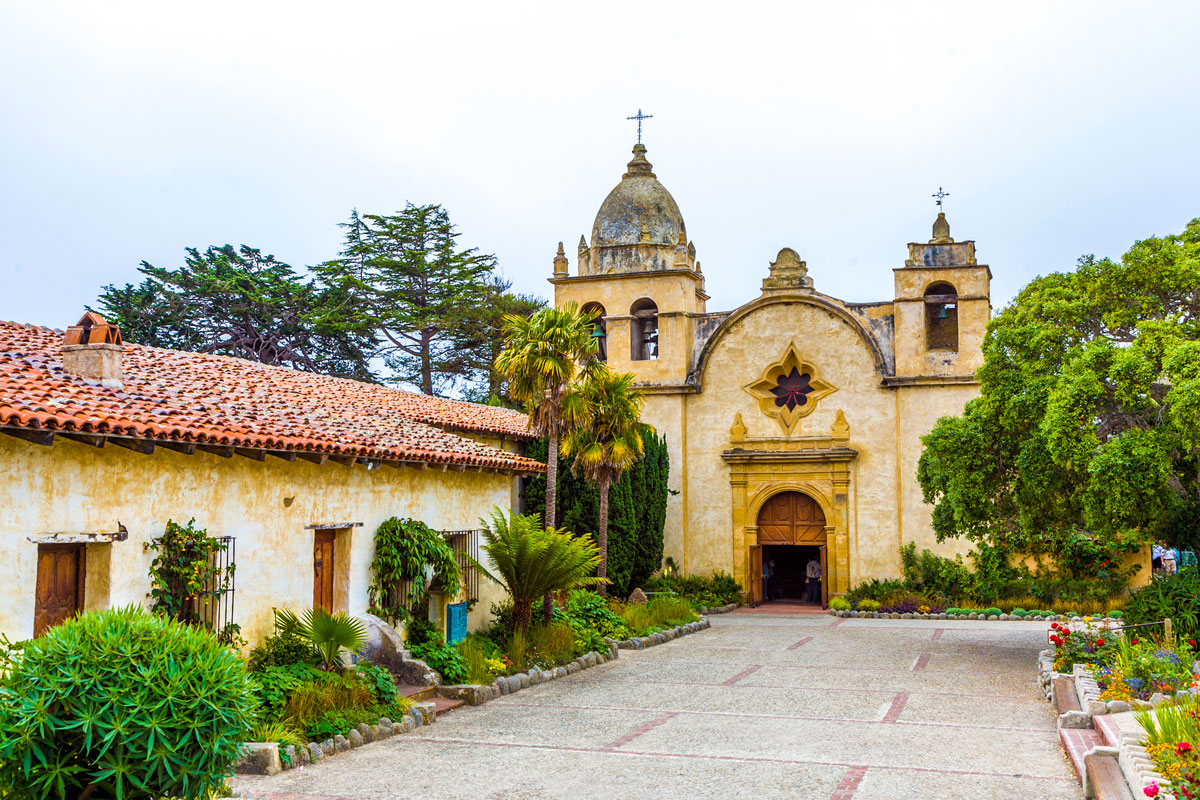 Sacramento State professor Rose Borunda is a leading proponent of the effort to reframe what California schoolchildren are taught about the Spanish missions, such as Mission Carmel (above) so that lessons include the experiences and perspective of Native Americans.
Sacramento State professor Rose Borunda is a leading proponent of the effort to reframe what California schoolchildren are taught about the Spanish missions, such as Mission Carmel (above) so that lessons include the experiences and perspective of Native Americans.Nearly every Californian who grew up in the state recalls the school assignment: Pick one of California’s 21 Spanish missions, study it, write a report, and – most memorably – build a model.
The project has been a staple of California education for decades, but it has also drawn criticism from Native Americans and others who say it sanitizes the harsh treatment of California Indians and minimizes centuries of pre-Colonial history. And as efforts to change the curriculum – backed by the state Department of Education – have gained momentum, a Sacramento State professor is playing a significant role in the effort to develop a more accurate and inclusive way to tell the story.
“When you consider the enslavement of the California Indians, when you consider the major disruption to the life of the people of this region, there’s a lot of pain." says Rose Borunda, a professor of education and one of the main proponents behind the California Indian History Curriculum Coalition, a group that has been working since 2014 to change what is known as the California Mission Project. "And then to not have their perspective included, it’s a real betrayal of the people who were the first stewards of this land.
"California Indians aren’t saying, ‘Don’t talk about the missions.' They’re saying, ‘Talk about them, but be honest about it.’ ”
With the help of her colleagues at Sacramento State and tribal leaders across California, Borunda is curating a list of tribe-vetted books and other educational resources that includes not only the Native American perspective of the mission era but their history in the state before the Spanish arrived. The list of resources, developed specifically for individual tribes, is published online, making them available for teachers who want to incorporate California Indian perspectives into their lessons.
“There’s an ongoing lack of trust that’s perpetuated every year among Native American parents, families and communities when disinformation is taught in classrooms,” Borunda says. “But when you have accurate information being put out, there’s a lot to be said about the healing that can take place.”
In 2016, the state Department of Education issued new guidelines stating students should be taught that California’s history began centuries before colonization, and that lessons about the mission era should include the impact they had on Native Americans. Although several organizations are working to help teachers respond to the new guidelines, Sacramento State is working directly with tribes to ensure that California Indian-vetted curricula is promoted.
The traditional focal point of the Mission Project has been the construction of the models, which places the emphasis on the building itself at the expense of the human impact, says Khal Schneider, a Sacramento State assistant professor of history who specializes in American Indian and 19th-century U.S. history and who has been advising the project. Schneider also is a tribal citizen of the Federated Indians of Graton Rancheria in Sonoma County.
“A lot of teachers want to teach this a different way, but they aren’t exactly sure where the resources are,” he says. “One of our main goals is to have curriculum developed by tribal people and tribal communities so that educators have ways to tell the story better.”
The effort goes beyond correcting the historical record regarding the missions. Also key is the development of multiple curricula, each for a specific tribe, so that they reflect the diversity and number of tribal communities in California as well their extensive pre-colonization histories. The resources for the Kumeyaay in San Diego, who were among the first to encounter Spanish colonization, for example, needs to be different than that of the Redding’s Winnemem Wintu, who didn’t experience missions but saw the salmon runs they relied on devastated by dam construction.
For Gregg Castro, a Salinan tribal leader, researcher and activist who also has been working with Borunda on the project, the creation of these localized curricula is part of a broader, grassroots effort to bring greater awareness to Native American experiences and knowledge – one that can benefit the entire state.
“Everybody focuses on the missions, but in the timeline of all our communities, that’s a small part,” Castro says. “We want to talk about our entire existence here, where we’ve gained all this knowledge that’s untapped.
"If you’re worried about fires, maybe you should talk to communities that have experienced these fires over the years. Maybe you should talk to us about the water because we know how it used to flow.”
In addition to developing the curricula, Borunda and her colleagues have been raising money to sponsor conferences on campus where teachers can network and learn how to use the resources in their classrooms. The most recent was in October, timed with Indigenous People’s Day. Earlier this year, the College of Education hosted a similar event for Sacramento State’s education students, preparing the next generation of teachers to implement the new state guidelines.
From the beginning of her involvement, Borunda says her colleagues in the College and across campus were quick to offer support and help, something that did not surprise her given the emphasis both the college and the University place on social justice.
“You have people who don’t just talk about it, they’re willing to enact it, to do something that changes the course of what’s being taught in the future,” Borunda says.
“For students coming through our program, it’s not just talking about social justice. It’s, ‘What are you going to do to make a difference?’ " – Jonathan Morales
